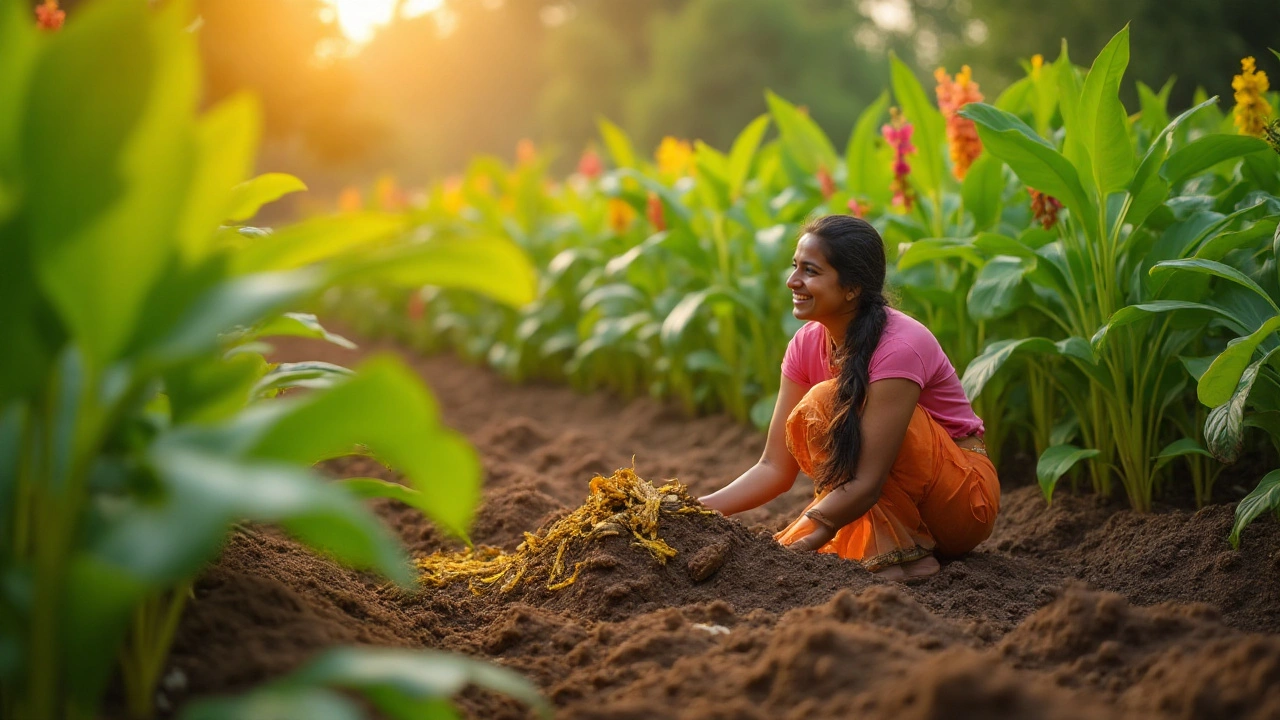Soil Enrichment Explained
When working with soil enrichment, the practice of improving soil fertility by adding nutrients, organic matter, and beneficial microbes. Also known as soil improvement, it forms the backbone of sustainable gardening and farming. One common method is adding compost, decomposed plant and kitchen waste that supplies carbon, nitrogen, and a thriving microbial community. Another technique involves cover cropping, growing fast‑growing plants like legumes or grasses to protect soil, fix nitrogen, and add organic residues when turned under. Using mulching, a layer of straw, leaves, or wood chips that conserves moisture and slowly releases organic material helps keep the soil cool and reduces erosion. Finally, incorporating biochar, charcoal‑like material produced from agricultural waste that locks carbon in the ground and improves structure can boost water retention and nutrient availability.
Why does soil enrichment matter? Healthy soil acts like a living sponge: it stores water, feeds plants, and filters pollutants. Enriching soil with organic amendments builds a network of fungal hyphae and bacterial colonies that break down waste into plant‑available forms. For example, compost adds both macro‑nutrients (like phosphorus) and micronutrients (such as zinc) that are essential for strong root development. Cover crops, on the other hand, influence soil enrichment by fixing atmospheric nitrogen and adding biomass that becomes organic matter after decomposition. Mulching supports soil enrichment by moderating temperature swings and preventing the loss of precious topsoil. Biochar enhances the soil’s cation‑exchange capacity, meaning it holds onto nutrients longer and reduces leaching. Together these practices create a virtuous cycle where each amendment reinforces the others, leading to higher yields, fewer chemical inputs, and more resilient ecosystems.
Getting Started: Simple Steps for Every Gardener
First, test your soil. A quick pH and nutrient test tells you whether you need lime, sulfur, or specific fertilizers. Once you know the baseline, begin layering compost at a rate of about 2–3 inches per square foot each season. If space allows, plant a cover crop in the off‑season; rye, clover, and vetch are easy choices that work in most Indian climates. After the cover crop matures, mow it and work it into the soil as green manure. Next, spread mulch around your plants—enough to cover the soil but thin enough to let water penetrate. For long‑term benefits, mix a small amount of biochar (about 5 % of the soil volume) into your planting beds; combine it with compost to avoid nutrient lock‑up. Remember to water wisely: a moist but not soggy environment lets microbes thrive and speeds up the breakdown of organic matter.
These techniques show up across our collection of articles. You’ll find a guide on daily watering for container gardens, tips on rehydrating dry soil, and a deep dive into no‑till gardening—all of which tie back to the core idea of building richer, more productive soil. Whether you’re a hobbyist with a balcony box or a farmer looking to boost crop returns, the methods outlined here lay the groundwork for stronger, healthier plant growth.
Now that you understand the fundamentals of soil enrichment and how compost, cover cropping, mulching, and biochar interconnect, explore the articles below for detailed how‑tos, case studies, and expert advice that will help you put these ideas into practice.
The Surprising Benefits of Banana Peels for Your Plants and Soil
Banana peels are often overlooked as a garden resource. Their rich nutrient content, especially potassium and phosphorus, can significantly boost plant health and soil quality. By composting or directly applying banana peels, gardeners can improve soil structure and promote healthier plant growth. This article explores the practical applications and benefits of using banana peels in your garden soil improvement strategies.
- manufacturing
- India
- food processing
- garden tips
- rice cultivation
- government schemes
- balcony garden
- urban gardening
- balcony gardening
- profitable business
- business ideas
- plastic manufacturing
- drip irrigation
- plant care
- steel manufacturing
- sustainable gardening
- startup ideas
- steel industry
- flower gardening
- textile manufacturers






